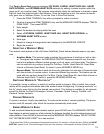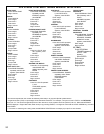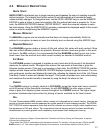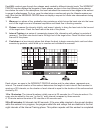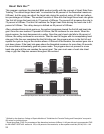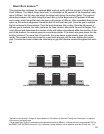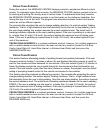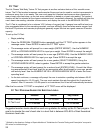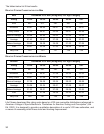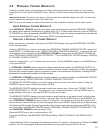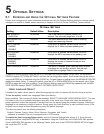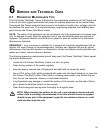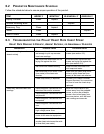
C
ROSS-TRAIN AEROBICS
During this workout, the MESSAGE CENTER displays prompts to emphasize different muscle
groups. To emphasize upper-body muscles, the MESSAGE CENTER displays prompts to focus
on pushing and pulling the moving arms at various times. To emphasize lower-body muscles,
the MESSAGE CENTER displays prompts to rest the hands on the stationary handlebar, thus
forcing the legs to do all the work. The program also alternates between forward and reverse
motion as well as different speeds.
Ten seconds after prompting the user to change pedaling direction, the workout applies “braking
resistance,” that is, a high resistance level that essentially forces the user to stop pedaling. Once
the user stops pedaling, the workout resumes the normal resistance level. The actual level of
breaking resistance depends on the user’s pedaling speed. If the user is pedaling at a rate equal
to, or faster than 6.2 mph (10.0 km/h), the workout applies the maximum level of braking resis-
tance. If the user is pedaling at a speed below 6.2 mph (10.0 km/h), the workout applies 92 per-
cent of the maximum.
CROSS-TRAIN AEROBICS is a constant-resistance workout. However, for a similar experience
with a variable-resistance-level workout, the user can start any workout (except for Fat Burn,
Cardio, Heart Rate Hill, Heart Rate Interval, or Extreme Heart Rate) and then press the
AEROBICS MODE key.
CROSS-TRAIN REVERSE
This workout features alternating periods of pedaling forward and pedaling backwards. If the user
chooses a workout duration 14 minutes or above, the unit displays alternating prompts to pedal for-
ward for five minutes and then backward for two minutes. If the user selects a goal of 13 minutes or
below, the display prompts the user to pedal forward for two minutes and then backward for one
minute. If the user selects a goal other than time (distance or calorie), the program uses the default
setting of prompting forward motion for five minutes and reverse for two minutes.
This feature varies the emphasis on different leg muscles. Ten seconds after prompting the user to
change pedaling direction, the workout applies “braking resistance,” that is, a high resistance level
that essentially forces the user to stop pedaling. Once the user stops pedaling, the workout resumes
the normal resistance level. The actual level of breaking resistance depends on the user’s pedaling
SPEED. If the user is pedaling at a rate equal to, or faster than, 6.2 mph (10.0 km/h), the workout
applies the maximum level of braking resistance. If the user is pedaling at a speed below 6.2 mph
(10.0 km/h), the workout applies 92 percent of the maximum.
CROSS-TRAIN REVERSE is a constant-resistance workout. However, for a similar experience
with a variable-resistance-level workout, the user can start any workout (except for Fat Burn,
Cardio, Heart Rate Hill, Heart Rate Interval, or Extreme Heart Rate, and then press the
REVERSE MODE key.
27



